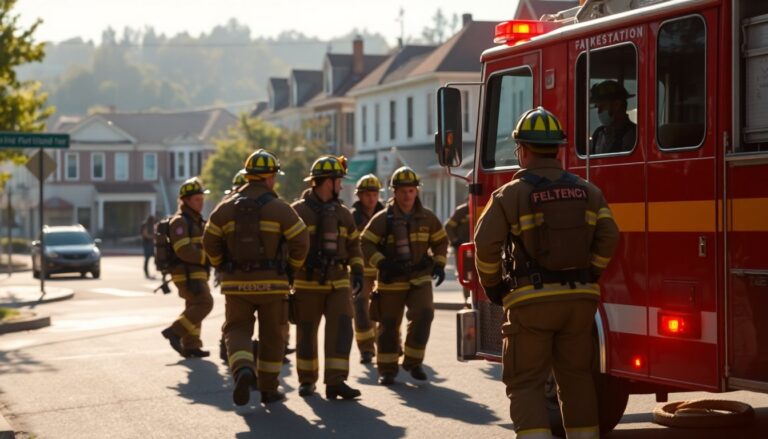Argomenti trattati
In the realm of public safety, the significance of fire protection cannot be overstated. Local governments, including counties, cities, and towns, have the option to enhance their firefighting capabilities by entering into contractual agreements with neighboring jurisdictions. This practice promotes efficiency and ensures that communities receive timely assistance during emergencies. Understanding the legislative framework governing these agreements enables municipalities to better prepare for potential fire-related incidents.
The ability to form partnerships for fire protection arises from provisions outlined in various legal statutes, such as § 27-15.2 and § 27-6.02. These laws permit local authorities to collaborate with adjacent counties and cities, including the District of Columbia, to bolster fire safety measures. This article examines the implications of these contracts and the benefits they bring to local communities.
The framework for intergovernmental fire protection
According to the relevant statutes, any municipality that operates firefighting equipment is empowered to engage in contracts with nearby jurisdictions. This arrangement is often advantageous for smaller towns or rural counties that may lack the necessary resources to maintain a fully equipped fire department. By pooling resources and sharing expertise, local governments can optimize their fire response capabilities.
What the legislation entails
The legal provisions allow municipalities to formalize agreements outlining the terms and conditions of fire protection services. These contracts can specify the type of support provided, including the sharing of personnel, equipment, and training programs. Such collaborations may also involve mutual aid agreements, where neighboring jurisdictions agree to assist each other during large-scale incidents, thereby enhancing overall emergency preparedness.
Moreover, the statutes encourage the development of comprehensive fire protection plans that address the unique needs of each community involved. This tailored approach can lead to improved response times and greater efficiency, ultimately saving lives and property in the event of a fire.
Benefits of collaborative fire protection
One of the primary advantages of forming fire protection contracts is the increased resource availability. By working together, municipalities can access a broader range of firefighting equipment and trained personnel. This is particularly beneficial in areas where funding for fire services may be limited. The shared expertise and resources significantly enhance the effectiveness of fire response efforts, leading to better outcomes during emergencies.
Cost-effectiveness and resource management
Another key benefit is the potential for cost savings. When municipalities come together to create fire protection agreements, they can reduce operational costs associated with maintaining independent fire services. Joint training sessions and shared equipment purchases can yield significant financial efficiencies. Additionally, pooling resources leads to improved planning and management of fire protection services, ensuring that funds are allocated effectively.
Furthermore, these agreements foster a sense of community among local governments. Collaborating on fire protection allows municipalities to strengthen relationships and build trust among their leaders and citizens. This sense of unity can translate into a more coordinated response during emergencies, ultimately enhancing public safety.
Considerations for successful agreements
While intergovernmental fire protection agreements offer numerous benefits, it is essential for local governments to approach these collaborations carefully. Establishing clear communication channels and maintaining transparency throughout the process is crucial for building trust among the parties involved. Additionally, municipalities should ensure that the terms of the agreements are fair and equitable, addressing the unique needs and concerns of each jurisdiction.
Regular evaluations of the agreements and their effectiveness should also be conducted to identify areas for improvement. By proactively addressing any challenges that arise, municipalities can ensure that their fire protection collaborations remain effective and beneficial for all involved.
The ability to form partnerships for fire protection arises from provisions outlined in various legal statutes, such as § 27-15.2 and § 27-6.02. These laws permit local authorities to collaborate with adjacent counties and cities, including the District of Columbia, to bolster fire safety measures. This article examines the implications of these contracts and the benefits they bring to local communities.0

